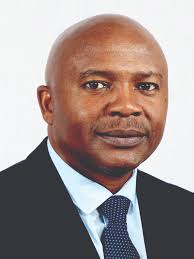
Solar energy is the solution – REEEI

At the recent SME Expo, this solar stove drew much attention. Exhibited by Harald Schütt of Musha CC, it can generate heat of between 120 and 150 degrees Celsius and is sufficient to do all the cooking for one family in full sunshine. Schütt intends to have the stove manufactured locally for distribution in rural areas off the regular electricity grid. (Photograph by Nyasha Nyaungwa)
In his report, titled Namibian Policy Perspectives on Solar Energy, which he presented in South Africa earlier this year, Ndhlukula emphasised the fact that rural communities are far too displaced for cost-effective grid electrification, saying the load factors are typically low.
“The journey for coordinated solar programmes began in 1993 when the Ministry of Mines and Energy (MME) launched a programme called the ‘Promotion of the Use of Renewable Energy Sources’, which was supported by the GTZ” said Ndhlukula.
“To tackle the issue of accesibility of solar energy, the REEEI on behalf of the Ministry of Mines and Energy is currently implementing the Off-Grid Energisation Master Plan (OGEMP), to establish energy shops from existing businesses within a reasonable distance of the targetted communities,” Ndhlukula emphasised. He said that such energy shops will sell and stock suitable, approved energy products such as solar panels, LPG gas, energy effecient stoves as well as lanterns.It is envisaged that each region will have at least one energy shop and so far 10 energy shops have been set up. “We will set up three more shops during September and want to have at least 180 energy shops in total in the whole country,” he said. The energy shops, Ndhlukula says, will be assisted with funds to stock up on appliances and training has already been offered to the sales personnel to give advice to customers on issues pertaining installation of the equipment.
To address the issue of energy efficiency, a project called the Namibia Energy Efficient Programme in buildings was set up to assess, measure and give recommendations on aspects of preserving energy in buildings. The project, funded by the United Nations Development Programme (UNDP), encourages designers of buildings to use less supplied energy but use natural energy from the sun. About 60 specialised trained energy auditors are currently auditing buildings at Government Park, Bank of Namibia, UN House and supermarkets and are expected to release their findings in September.” The next phase is to implement the building specifications, which will assess new buildings. As opposed to only assessing the safety measures and use of non-harmful substances in the building, we will also look at ways of saving energy in the new building,” said Ndhlukula. The project is expected to yield results in 2013.
To sustain the projects, Ndhlukula said that a Green Build Council, a voluntary body was established by concerned bodies with the mandate of promoting a green environment, training and capacity building as well as to operate a building rating tool, called the Green Rating Tool. It is a standardised set of criteria developed in South Africa to rate buildings on energy and water consumption. Pricewaterhouse Coopers is currently drawing up a business plan for the project, which will be launched in September this year.












































